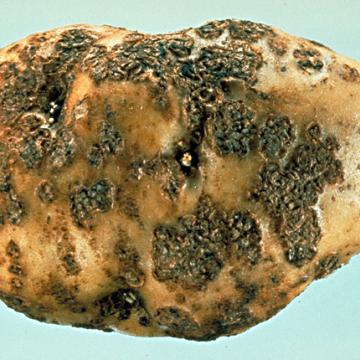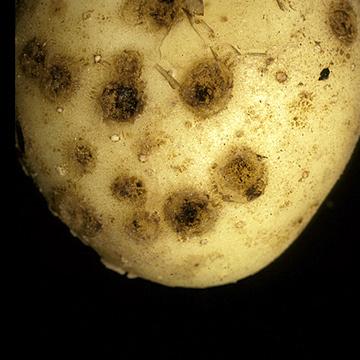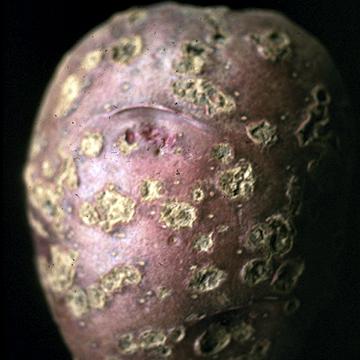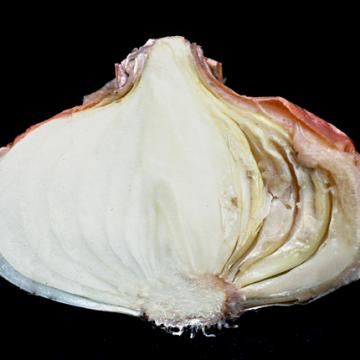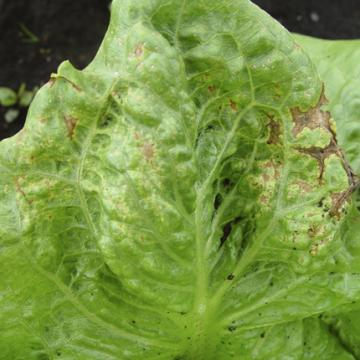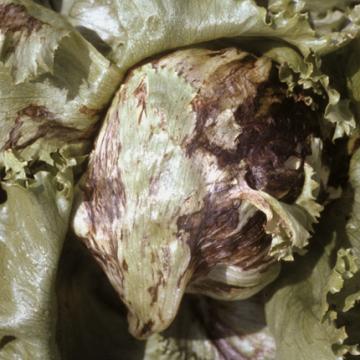DISEASE: Common scab (Potato scab)
HOST: Potato
Symptoms of common scab vary depending upon the cultivar. The lesions can be shallow or deep, erumpent and corky, and vary in color.
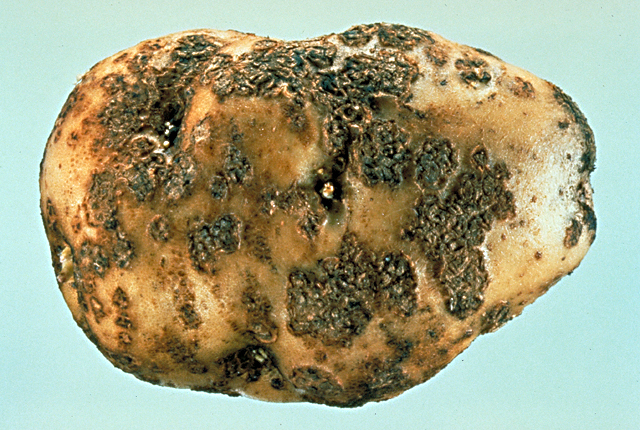
Common scab (Potato scab) | Potato
DISEASE: Common scab (Potato scab)
HOST: Potato (Solanum tuberosum)
PATHOGEN: Streptomyces scabiei
PATHOGEN SYNONYM: Streptomyces scabies
SOURCE: A. Secor
DISEASE: Common scab (Potato scab)
HOST: Potato
White-skinned tuber with sunken and superficial scab lesions.
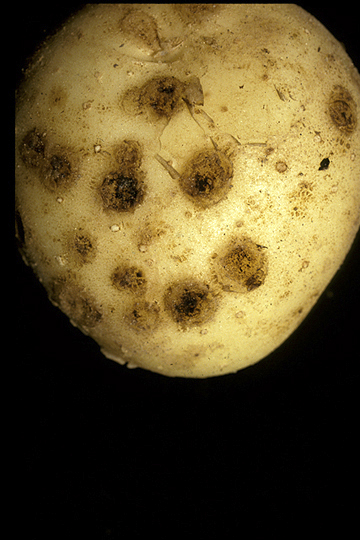
Common scab (Potato scab) | Potato
DISEASE: Common scab (Potato scab)
HOST: Potato (Solanum tuberosum)
PATHOGEN: Streptomyces scabiei
PATHOGEN SYNONYM: Streptomyces scabies
SOURCE: S. Thomson
DISEASE: Common scab (Potato scab)
HOST: Potato
Red-skinned tuber with lesions that usually penetrate less than 1 mm.

Common scab (Potato scab) | Potato
DISEASE: Common scab (Potato scab)
HOST: Potato (Solanum tuberosum)
PATHOGEN: Streptomyces scabiei
PATHOGEN SYNONYM: Streptomyces scabies
SOURCE: S. Thomson
DISEASE: Sour skin
HOST: Onion
Symptoms of sour skin are characterized by slimy, pale yellow to light brown decay.
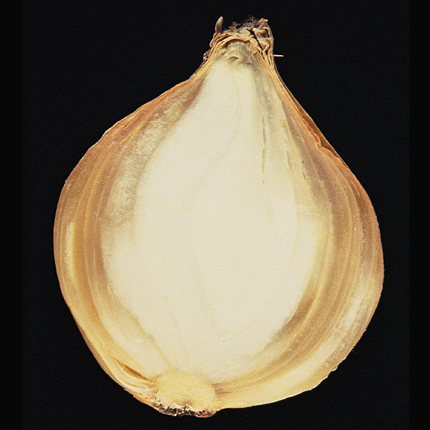
Sour skin | Onion
DISEASE: Sour skin
HOST: Onion (Allium cepa)
PATHOGEN: Burkholderia cepacia
PATHOGEN SYNONYM: Pseudomonas cepacia
SOURCE: Dep. of Agric. & Agri-Food, Government of Canada
DISEASE: Sour skin
HOST: Onion
Characteristic pale yellow to browning of infected area.
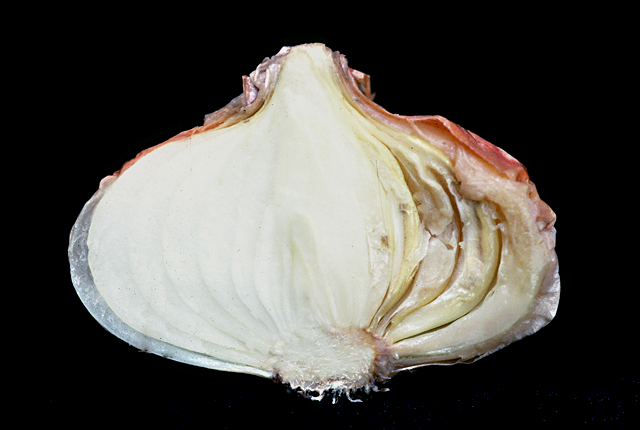
Sour skin | Onion
DISEASE: Sour skin
HOST: Onion (Allium cepa)
PATHOGEN: Burkholderia cepacia
PATHOGEN SYNONYM: Pseudomonas cepacia
SOURCE: R. Gitaitis
DISEASE: Varnish spot
HOST: Lettuce
Leaf with large brown and small, shiny, dark brown necrotic spots that spread in size and later dry out.
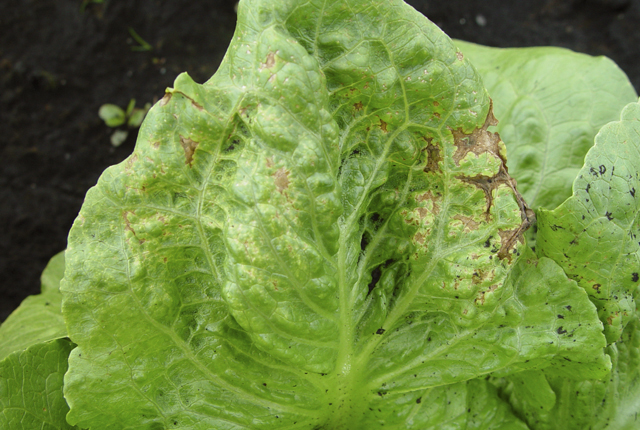
Varnish spot | Lettuce
DISEASE: Varnish spot
HOST: Lettuce (Lactuca sativa)
PATHOGEN: Pseudomonas cichorii
SOURCE: S. Miller
DISEASE: Varnish spot
HOST: Lettuce
Advanced stage of disease with large, brown necrotic areas. They most often are along veins. Outermost leaves of the head usually are not affected.
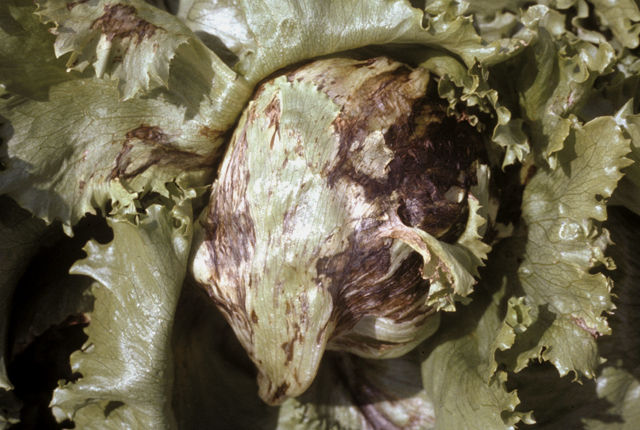
Varnish spot | Lettuce
DISEASE: Varnish spot
HOST: Lettuce (Lactuca sativa)
PATHOGEN: Pseudomonas cichorii
SOURCE: K. Ohata, M. Goto


